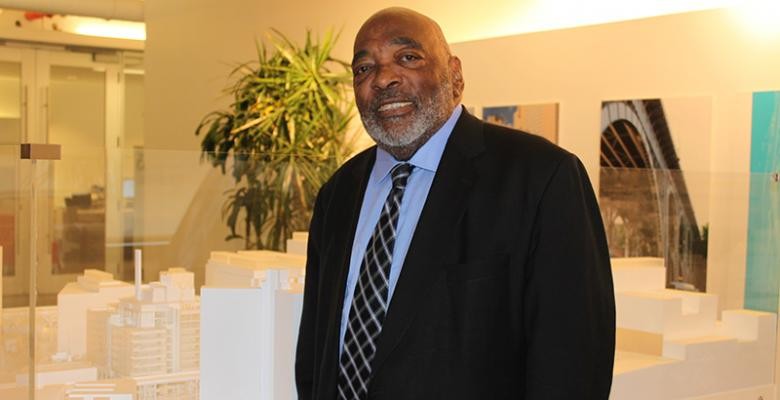The innovative campus plan—designed by Renzo Piano Building Workshop with Skidmore Owens and Merrill—was awarded a Stage 1 LEED-ND platinum certification for neighborhood development, the highest rating given by the U.S. Green Building Council. It is the first such certification in New York City and the first for a campus anywhere in the country. (LEED stands for Leadership in Energy and Environmental Design.)
Among the campus features that helped earn that certification are proximity to public transportation, tree-lined pedestrian-friendly sidewalks, ample public open space, reduced energy consumption and a waste recycling program. The open, accessible campus is intended to provide a public amenity and enhance connections between the community and the renovated Harlem Piers Park west of Riverside Drive.
From its Earth Institute to its architecture school, Columbia is a globally recognized leader in academic research on climate change and sustainable development. “There is agreement from the top down, the University is committed to helping to protect our environment,” said Wilmouth Elmes (SEAS’80), associate vice president for engineering and technical services at Manhattanville. “The systems we put in place use less energy, less water and less electricity.”
A central energy plant beneath the first two buildings to open on the new campus, the Jerome L. Greene Science Center and the Lenfest Center for the Arts, will reduce energy consumption by 27 percent compared to conventional systems.
It will also minimize the release of carbon dioxide into the atmosphere—a factor in climate change—as well as other pollutants. “There’s a lot of stuff we would be breathing if we didn’t do this,” said Elmes. “We take that very seriously.”
The Greene Science Center, home to the Mortimer B. Zuckerman Mind Brain Behavior Institute, will be one of the most energy efficient buildings in Manhattan, he said. Also designed by Renzo Piano, the building and its technical systems won a Diamond Award, the highest, from the American Council of Engineering Companies of New York. Its structure and systems are designed to reduce heat loss in winter and stay cooler in summer, with a building-management system that can respond to changing outdoor temperatures and energy use indoors. The double-glass exterior allows abundant natural light and virtually eliminates noise from the nearby elevated subway. The floors were reinforced to reduce vibrations from the subway that could damage sensitive scientific instruments.
At the outset of construction, the University worked with the Environmental Defense Fund to develop practices that contractors must use to reduce the impact on the environment and minimize disruption to the community. Every truck or crane that enters the site must use the latest pollution-control equipment, and idling motors are not permitted. As construction vehicles leave the site, their wheels are washed so dust isn’t tracked through neighborhood streets.
“We know asthma is a problem in Harlem,” Elmes said. “Practices like these could save a child’s life.” Other efforts to reduce the impact on the neighborhood and the environment include sound monitors around the site that ensure compliance with city noise codes. And construction waste is recycled, with recovered materials now being used in projects around the world.
“I’ve been in this business 50 years, and this is the most exciting thing I’ve worked on,” said Elmes, who will turn 71 just as the first buildings open this spring.
